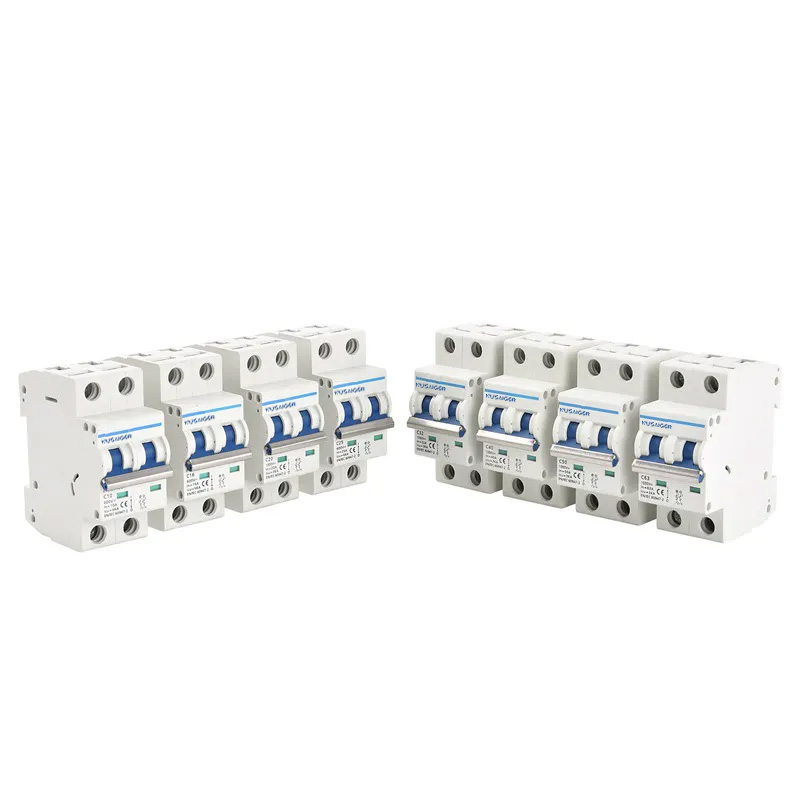Best Practices, Innovations, and Optimization Strategies for Miniature Circuit Breakers (MCBs)
1. Introduction
Miniature Circuit Breakers (MCBs) are critical for the protection of electrical circuits against overloads and short circuits. This guide explores best practices, innovative technologies, and strategies to optimize MCB performance across residential, commercial, and industrial applications.
2. Understanding MCB Functionality
MCBs automatically disconnect electrical circuits during abnormal conditions:
- Overcurrent Protection: Prevents excessive current that may damage wires and equipment.
- Short Circuit Protection: Quickly interrupts high fault currents.
- Thermal and Magnetic Tripping: Ensures precise response to overload and short circuit conditions.
- Integration with RCDs for enhanced shock protection.
3. Best Practices in Installation
- Isolate main power before installation.
- Select MCB type according to load characteristics (Type B, C, D, K, Z).
- Use appropriate wire sizes and tighten connections to manufacturer specifications.
- Ensure proper orientation on DIN rails and panel spacing.
- Label circuits clearly for easy identification during maintenance.
- Test MCB functionality before energizing circuits.
4. Maintenance and Longevity Strategies
- Regular visual inspections for discoloration, damage, or dust accumulation.
- Check and tighten terminal connections periodically.
- Manual testing of trip mechanisms to ensure reliability.
- Monitor environmental conditions that may require derating of MCBs.
- Maintain detailed logs for preventive maintenance and compliance.
5. Advanced Innovations in MCB Technology
- Smart MCBs with IoT-enabled monitoring of load and trip status.
- Remote trip and reset functionality integrated with energy management systems.
- Hybrid devices combining overcurrent, short circuit, and residual current protection.
- Compact and modular designs for high-density panel installations.
- Enhanced environmental resistance for extreme industrial conditions.
6. Optimization Strategies for Electrical Systems
- Load Distribution: Ensure balanced load across multiple MCBs to prevent overload.
- Energy Efficiency: Integrate smart MCBs to monitor consumption and reduce wastage.
- Predictive Maintenance: Use historical trip data to anticipate failures.
- Surge Protection: Combine MCBs with surge protective devices for sensitive equipment.
- Panel Layout Optimization: Plan circuits to reduce wiring complexity and improve accessibility.
7. Residential Applications and Considerations
- Type B MCBs for lighting and small appliances.
- Combine with RCDs for enhanced safety against electric shocks.
- Distribute high-power appliances (kitchen, HVAC) across multiple circuits.
- Regular inspection ensures long-term reliability in home systems.
8. Commercial and Industrial Applications
- Type C or D MCBs for moderate and high inrush loads in offices, factories, and shops.
- Three-phase and four-pole MCBs for motors, production lines, and large equipment.
- High breaking capacity MCBs ensure protection in industrial fault conditions.
- Periodic thermal imaging and inspections prevent overheating and potential failures.
9. Common Troubleshooting Scenarios
- Frequent trips due to overload or incorrect MCB type.
- MCB fails to trip indicating mechanical failure; replacement required.
- Buzzing noises from loose connections or high harmonic currents.
- Residual current issues due to faulty grounding or leakage paths.
- Environmental degradation from dust, moisture, or vibration.
10. Case Studies and Practical Examples
Case 1: Solar PV installation using DC-rated MCBs to protect string circuits from overcurrent.
Case 2: Commercial office lighting upgraded to Type C MCBs to manage moderate inrush loads.
Case 3: Industrial motor circuits protected with Type D MCBs to avoid nuisance tripping and maintain uptime.
11. Safety Standards and Compliance
- IEC 60898: Global standard for residential and commercial MCBs.
- UL 489: North American compliance for circuit protection devices.
- EN 60947: Industrial MCB standard for enhanced safety.
- Adherence to local electrical codes is mandatory.
12. Smart MCB Integration and IoT
- Remote monitoring of trip events and load conditions.
- Integration with building management systems for energy optimization.
- Predictive analytics for early detection of abnormal current patterns.
- Automated alerts for overload, short circuit, or environmental issues.
- Compact modular designs allow easy panel upgrades and expansion.
13. Long-Term Reliability and Best Practices
- Select certified MCBs from reputable manufacturers.
- Maintain clean, dry panels to prevent dust and moisture accumulation.
- Regular inspection and functional testing of all circuits.
- Upgrade legacy MCBs to smart models where applicable.
- Document all installations for maintenance, troubleshooting, and compliance.
14. Future Trends in MCB Technology
- Integration with smart grids and renewable energy systems.
- Wireless monitoring and remote management of MCBs.
- Predictive maintenance using AI and historical data.
- Advanced environmental protection for extreme conditions.
- Compact, modular, and high-density panel designs for modern electrical systems.
15. Conclusion
Adopting best practices, leveraging innovations, and implementing optimization strategies ensure that Miniature Circuit Breakers provide reliable protection across residential, commercial, and industrial environments. Proper installation, maintenance, and integration with smart technologies enhance safety, efficiency, and longevity of electrical systems while supporting modern energy management and smart building initiatives.



